Go into any dollar store in the United States and you’ll find the same kind of stuff. There are grocery items and cleaning products, some of them generic and others brand-named. But then there are other things for sale—toys and jewelry and knick-knacks that have a kind of generic cheapness to them.
Dollar stores are not just a U.S. phenomenon. They can be found in Australia and the United Kingdom, the Middle East and Mexico. And a lot of the stuff—the generic cheap stuff for sale in these stores—comes from one place. A market in China, called the International Trade Market, or: the Futian market.
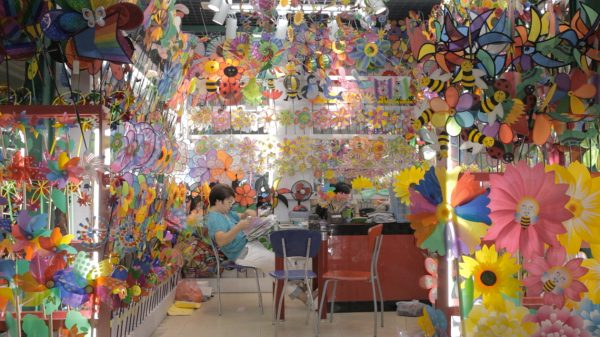
The Futian market is enormous. It is made up of thousands of little stalls scattered through four interconnected buildings. Estimates put its size at around 43 million square feet. That’s about ten times bigger than the Mall of America.
The market is in the city of Yiwu, about two hundred miles southwest of Shanghai. Being a market city, it is quite vibrant in parts, but over the years Yiwu has transformed from a bucolic mountain town to a cookie-cutter industrial city.
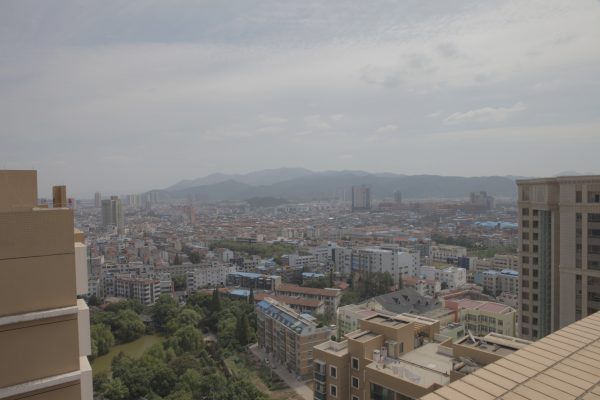
In the 1970s, under the leadership of Deng Xiaoping, communist China began to open itself up to capitalism. The province of Zhejiang, where Yiwu is located, had a history of trade and people there were eager to join this new economy. Villagers spent their life savings on cheap factory equipment and started producing items that were easy to make—things like playing cards, Christmas decorations, and wooden toys.
The street markets that began this transformation evolved over time into the enclosed Futian market. Every day thousands of foreign traders visit the market looking for things to buy in bulk and sell to dollar stores and other vendors in their home countries.
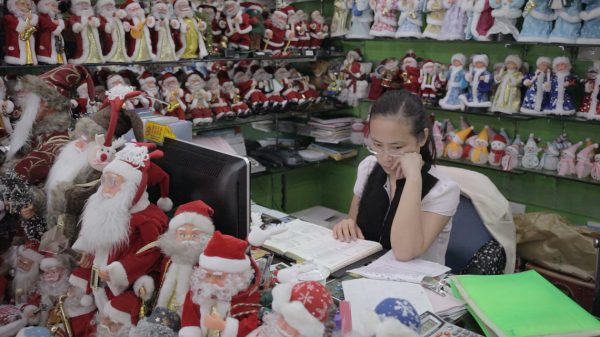
Wang Xiaoyang has a stall in the Futian market selling Christmas items. Seven days a week she’s in the shop surrounded by Santas—Santas surfing, Santas climbing out of chimneys, Santas riding motorcycles. But before she started this business, Wang Xiaoyang had never heard of Christmas, let alone Santa.
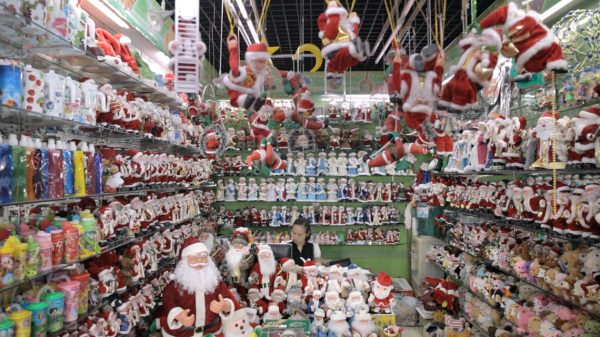
Wang Xiaoyang is just one link in the economic chain that starts in China and ends at your local dollar store. The hub of that economy is certainly the Futian market in Yiwu, but the whole Zhejiang province is involved. Neighboring towns are all producing different items, and all have their specialties. One town might make plastic Santas while another makes costume jewelry.
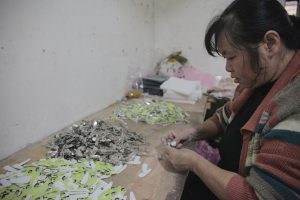
Most of the production is being carried out by very small operations out of places like a family garage or basement using small pieces of industrial equipment. Sometimes it is as simple as a little sewing machine, or a device that sets metal into a mold. After the item is created, it will often be taken to some other town for packaging.
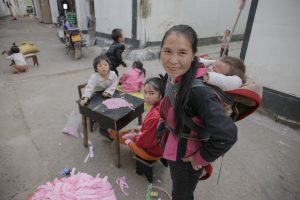
For many people in the Zhejiang province, this isn’t even their full-time job. Often these businesses are simply side ventures that people operate at night after long days working on nearby farms.
The kind of unbridled capitalism that created the Futian market has taken its toll on China. When it is unchecked, as it is in places like Yiwu, you see a landscape nearly destroyed. Mountains are dug out and people burn rubbish. Smog envelops the city. Infrastructure is sometimes non-existent.
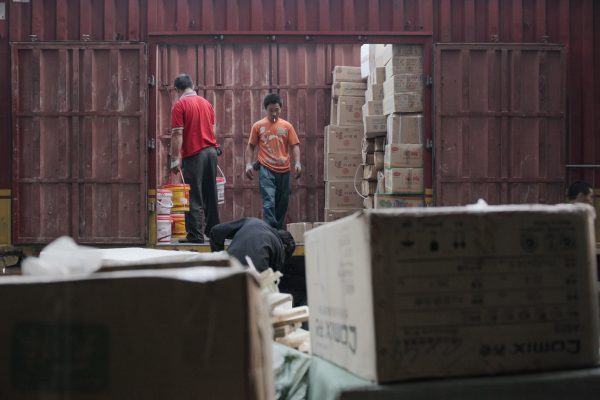
But many people have seen their lives changed from an existence where there was often little to eat and virtually no consumer goods to buy. Wang Xiaoyang has seen her business grow, and it’s allowed her family to move into the middle class. But now she wants something more—to travel, to study, to help other people. She doesn’t want to sell Santas seven days a week for the rest of her life.
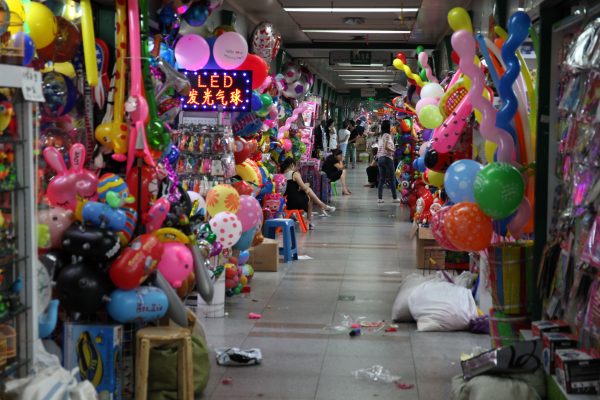
For now though, Wan Xiaoyang has to work harder. As the standard of living rises in China, so do labor costs. And this means Wang Xiaoyang’s profit margin is getting slimmer.
With these higher costs in China, people are seeking out cheaper labor markets in places like Bangladesh, Vietnam, and Laos.
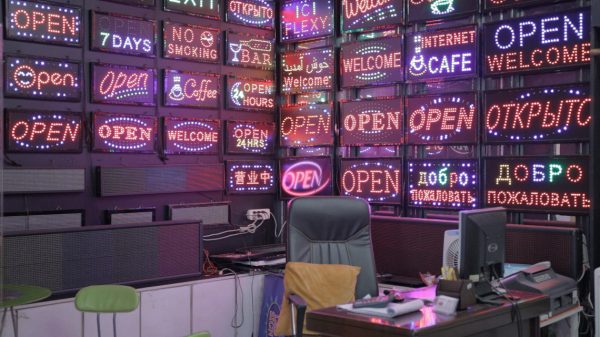
The Chinese government is also interested in moving the country away from its reputation as the world’s factory. They don’t want to be the place where all of the “Made in China” junk comes from. They want to be the next South Korea or Taiwan, or Japan—making high-tech goods like computers, cars and solar panels.
But Yiwu is the city that cheap junk built or really half-built, since the basic infrastructure has not caught up with the growth. In the coming years, the people of Yiwu will have to find ways to finish building their city and then find new ways to survive in a changing global economy.
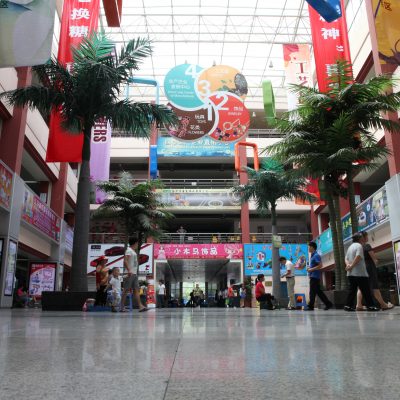
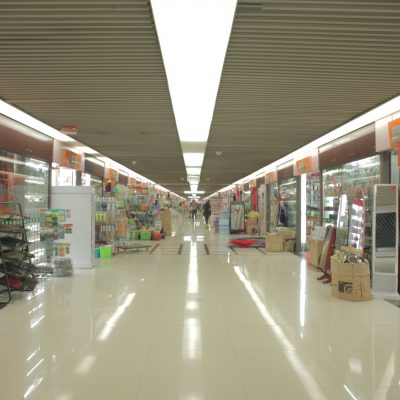

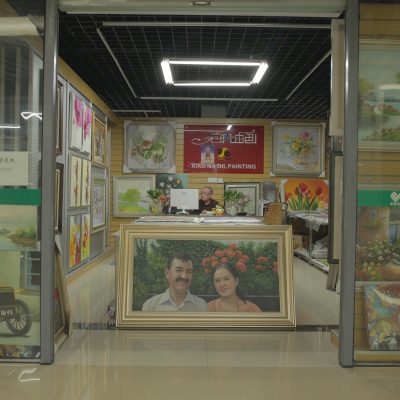



Comments (6)
Share
I love most of episodes made by 99% invisible. But, as a Chinese, I really don’t like this one. It pays too much attention on the dark side of Yiwu. Yiwu is the world‘s largest market for small commodities. It’s growing very fast. The shop owners there are millionaire. They are smart and hard working. Although Chinese government wants to move to high-tech business, it is not necessary to talk about Yiwu in such a pessimistic tone. Yiwu is still gonna be a very important part of Chinese export.
99PI is missing their soul with stories like this. It was interesting, and as always incredibly presented. But there was nothing of Design. Isn’t Design your thing?
Angles that would have fit why I have listened to 99PI for years could be:
– How do you design plastic Santa without living in Santa culture?
– Do any single family businesses that buy a single piece of production equipment adjust designs to differentiate? Or are they stuck with making whatever their machine produces?
– How does a city like Yiwu design infrastructure when growth happens faster than the city can plan? You hinted at this twice. Tell us more how a city functions with trash pickup and clean water with limited planning and infrastructure. This could lead into a sequel about how cities decline in population; e.g Cleveland versus Detroit.
– If the story was all about the physical marketplace, how did it grow from an open marketplace into four connected buildings of this scale. Were the buildings built for the marketplace or did it absorb the buildings? Who owns the buildings? How do they govern with the large number of tenants? Are there any unregistered squatter tenants? So many questions about designing such a large community. Did the community design the organization or does the organization of the marketplace control the community?
– And of course, what is the need for a physical marketplace in light of Alibaba?
But alas, I enjoyed the current story but can’t remember a single design centric topic. Please don’t loose your core purpose. Remember the Revolving Door?
I enjoyed this story. It brought back so many memories of my happy hours in just such a market. My markets were 中东 and 远方. You can buy just about anything there. The best part is the food court. You can just stroll and eat 肉夹馍 or 臭豆腐 or 肉串儿. Best memories.
My wife and I have a dear friend who owns two stores at 远方. She actually has a masters degree in Russian. She would rather be doing something else with her life, but perhaps it is the tightening profit margins referenced in this article which keeps her where she is.
Though I live in the USA now, I still visit China from time to time and write about it. Here’s one of my recent articles: http://ivannovation.com/blog/8-tips-for-marketing-your-app-in-china/
Thanks for this episode, it really made me understand where it all comes from. I hope these people won’t be simply ignored as the economy eventually changes. Also, I think Evan Bontrager’s comment is pertinent. There was so much left to explore.
I just watched an Australian documentary about a group of people who formed an intentional community to live simply, build tiny houses, farm, live communally. Then I listened to this story. My God, the domino effect our consumptive lives have on people and places around the world… Thank you for an eye-opening look at where our junk comes from. It motivates me more to work towards a zero waste life. Just listened to a few interviews about that topic on the podcast Sustainable Mind. Much more positive news! :-0
Have y’all seen or heard about this picture?
https://en.wikipedia.org/wiki/99_Cent_II_Diptychon
The photo, which depicts a brightly colored 99 Cent store, “was auctioned at Sotheby’s on February 7, 2007, for a price of US$3.34 million.”